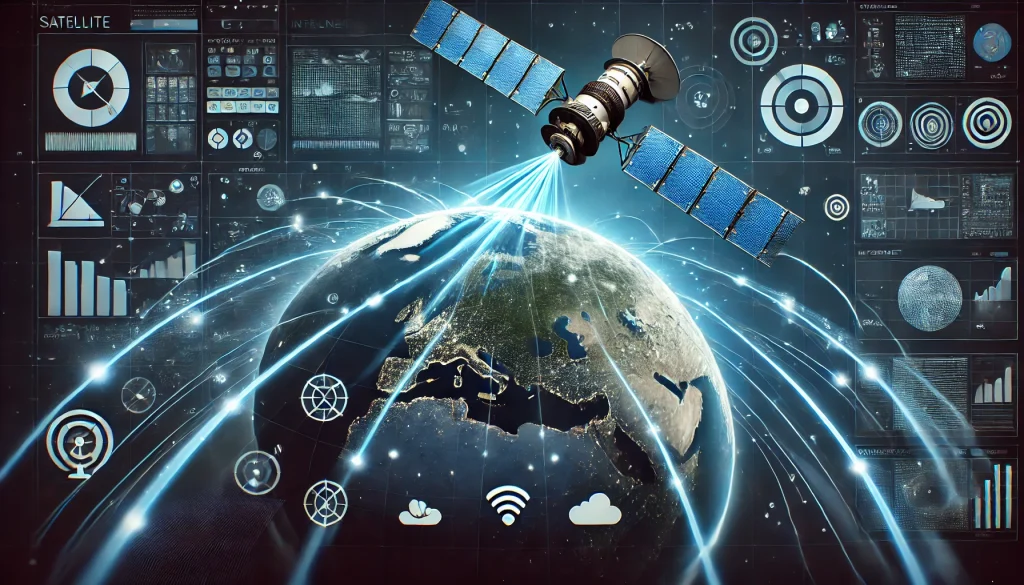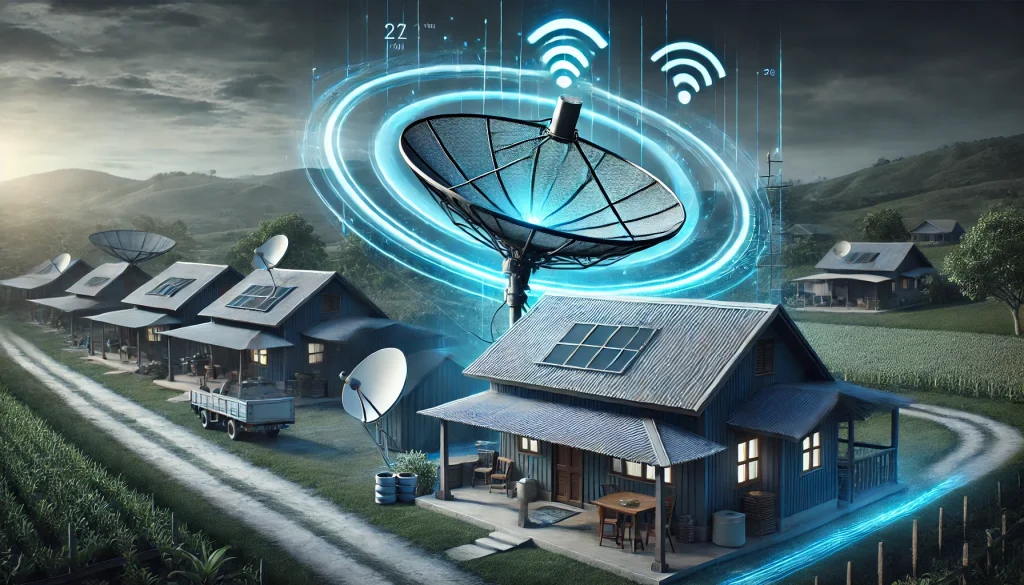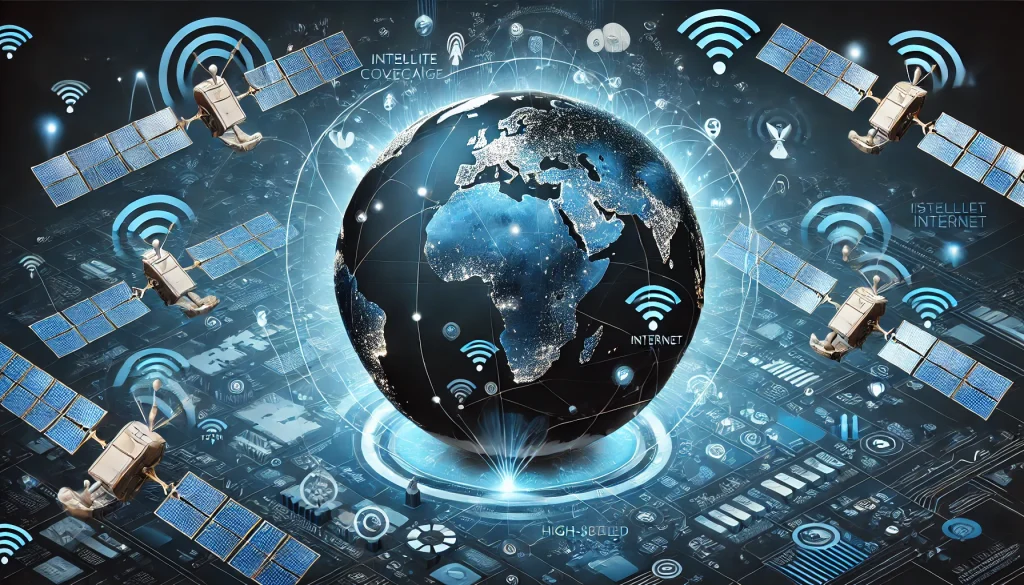
In today’s hyperconnected world, satellite internet has emerged as a game-changing solution, bringing connectivity to remote areas where traditional broadband struggles to reach. As we enter October 2024, advancements in satellite technology continue to reshape the landscape of global access. With companies like Starlink, Viasat, and HughesNet leading the charge, satellite internet is gaining unprecedented traction. This article explores the latest trends, breakthroughs, and challenges in the space, giving you everything you need to know about this rapidly evolving technology.
Overview
Satellite internet is a form of wireless internet that uses communication satellites orbiting Earth to provide internet access. Unlike traditional fiber or cable-based internet services, satellite internet is crucial for connecting rural and remote regions, where laying cables is impractical or too costly. Companies like Starlink and Viasat have made significant strides in improving satellite internet’s speed, reliability, and affordability. The latest breakthroughs, coupled with expanding global coverage, mean that more people than ever can experience high-speed internet, no matter where they live. As of October 2024, the technology is poised to play a pivotal role in bridging the digital divide.
The Importance of Satellite Internet
Satellite internet is crucial, particularly in areas where terrestrial internet is unreliable or unavailable. This enables access to essential online services like education, healthcare, and government resources. During natural disasters or emergencies, it ensures reliable communication when ground-based infrastructure is damaged. Furthermore, the rise of remote work and education has heightened the demand for reliable internet, even in the most remote locations.
Satellite internet also plays a crucial role in advancing global digital inclusion. With the ability to provide connectivity to underserved regions, this is essential for economic development in rural areas. By 2025, it is projected to reach over 4 billion people globally, bridging the gap between urban and rural internet access.
Recent Breakthroughs in Satellite Internet
By October 2024, satellite internet has experienced significant technological breakthroughs poised to reshape the industry. One of the most notable advancements comes from Starlink, which has now launched over 5,000 satellites, enabling faster, more reliable internet services worldwide. Starlink’s “Gen 3” satellites use lasers to enhance data transfer speeds between satellites, reducing latency and improving internet performance. This advancement brings Starlink closer to its goal of delivering gigabit-speed internet across the globe.
On the other hand, Viasat has introduced a new satellite, ViaSat-3, which significantly increases bandwidth capacity. With ViaSat-3, Viasat aims to provide high-speed internet to both residential and business users, with download speeds of up to 1 Gbps. This satellite is expected to enhance user experiences by reducing buffering times and increasing overall reliability, especially in remote regions.
Furthermore, HughesNet has improved its satellite technology by deploying advanced modulation techniques that optimize data transmission. These enhancements have led to improved download speeds, lower latency, and more consistent service, particularly for users in hard-to-reach areas.
Emerging Applications of Satellite Internet

Satellite internet is not just for rural homes anymore; it is being integrated into various industries. The maritime and aviation sectors have particularly benefited from this, as airlines and shipping companies now offer reliable onboard WiFi, powered by satellite connections. This allows passengers to stay connected even while traveling over oceans or in remote airspace, enhancing the customer experience.
In the energy sector, this technology monitors and manages remote oil rigs and solar farms, transmitting real-time data to control centers miles away. This boosts efficiency and reduces downtime. Additionally, it powers smart agriculture, allowing rural farmers to connect equipment and gather data to improve crop yields and sustainability.
Integration with Other Technologies
Satellite internet is increasingly integrating with emerging technologies like 5G networks and the Internet of Things (IoT). For instance, Starlink has partnered with 5G providers to create hybrid networks that combine the best aspects of satellite and terrestrial networks, ensuring faster speeds and broader coverage. These hybrid solutions benefit suburban and rural areas, where traditional 5G infrastructure is still developing.
The IoT industry is also benefiting from it, with more devices relying on satellites for data transmission in remote areas. Satellite-powered IoT devices are used in industries such as environmental monitoring, logistics, and agriculture. These applications depend on reliable satellite connectivity to collect and transmit data in real-time, enabling better decision-making and optimization.
User Experience Improvement
One of the most significant improvements in satellite internet in recent years is the enhanced user experience. Thanks to innovations in satellite technology, users now enjoy faster download and upload speeds, reduced latency, and more stable connections. This is particularly important for activities like video conferencing, online gaming, and streaming, where low latency is essential for a seamless experience.
Moreover, providers like HughesNet and Viasat have developed user-friendly customer support tools that allow users to troubleshoot issues more easily. With the integration of AI-powered chatbots and remote diagnostics, users can resolve connectivity problems without the need for a technician to visit their homes.
Challenges and Limitations

Despite the progress, satellite internet faces several challenges. The high cost of infrastructure is a major hurdle. Launching and maintaining satellites is expensive, and providers often pass these costs to consumers. As a result, services can be more expensive than traditional broadband in some areas.
Another challenge is the issue of signal latency, which, while improved, still lags behind fiber-optic connections. For some users, this can impact the quality of certain activities, such as competitive online gaming or high-definition video streaming.
Finally, satellite internet is subject to weather-related disruptions. Heavy rain, snow, or even dense cloud cover can interfere with the signal, leading to temporary outages or reduced performance. Internet providers are making advancements to mitigate these effects, but the challenge remains.
Conclusion
As we move deeper into October 2024, satellite internet continues to be a key player in global connectivity. With technological advancements from companies like Starlink, Viasat, and HughesNet, it is improving in terms of speed, reliability, and affordability. From powering remote industries to enhancing user experiences, it transforms the way we connect to the digital world.
However, challenges such as high costs and signal disruptions remain. Despite these obstacles, the future of this technology looks bright, with emerging applications and integrations that promise to keep the industry on an upward trajectory. For individuals and businesses in remote areas, satellite internet offers a vital lifeline to the online world, and its importance will only grow in the years to come.
Whether you are a digital nomad, a rural resident, or a business owner in a remote location, investing in satellite internet is a smart choice for staying connected in our increasingly digital world.
FAQ
What is satellite internet?
Satellite internet is a type of internet service that uses satellites to provide broadband connections to remote or hard-to-reach areas.
How fast is satellite internet compared to traditional broadband?
Recent advancements have improved satellite internet speeds, with services like Starlink offering speeds comparable to traditional broadband, though latency can still be an issue.
Is satellite internet affected by weather?
Yes, satellite internet signals can be impacted by severe weather conditions like heavy rain or snow, which may cause temporary service interruptions.
Resources
Globe. What is Satellite Internet?.
Internxt. Starlink: The Future of Satellite Internet?.
McKinsey Digital. Satellite Internet’s New Era: Making the Price Right.
IEEE ComSoc. Satellite Internet.
Viasat. How it Works: The Technology Behind Satellite Internet.
